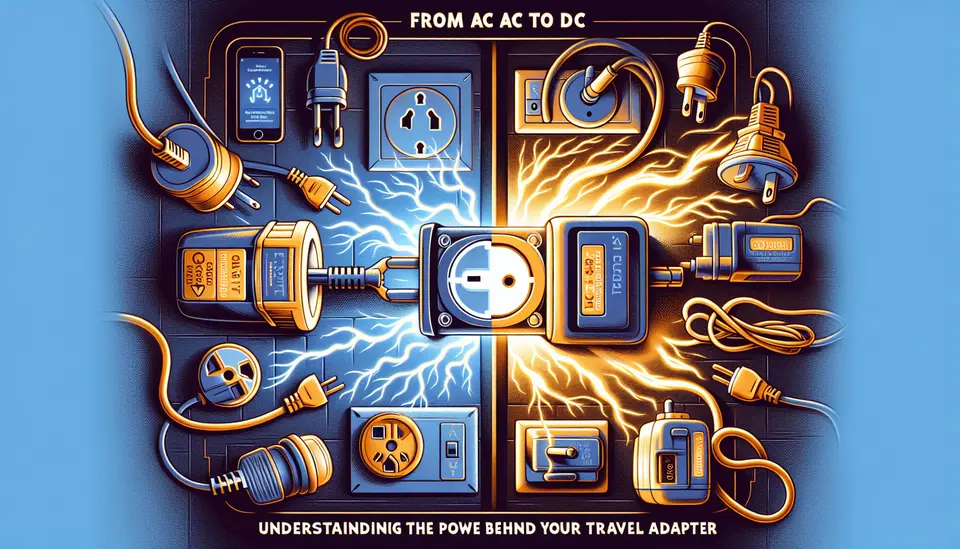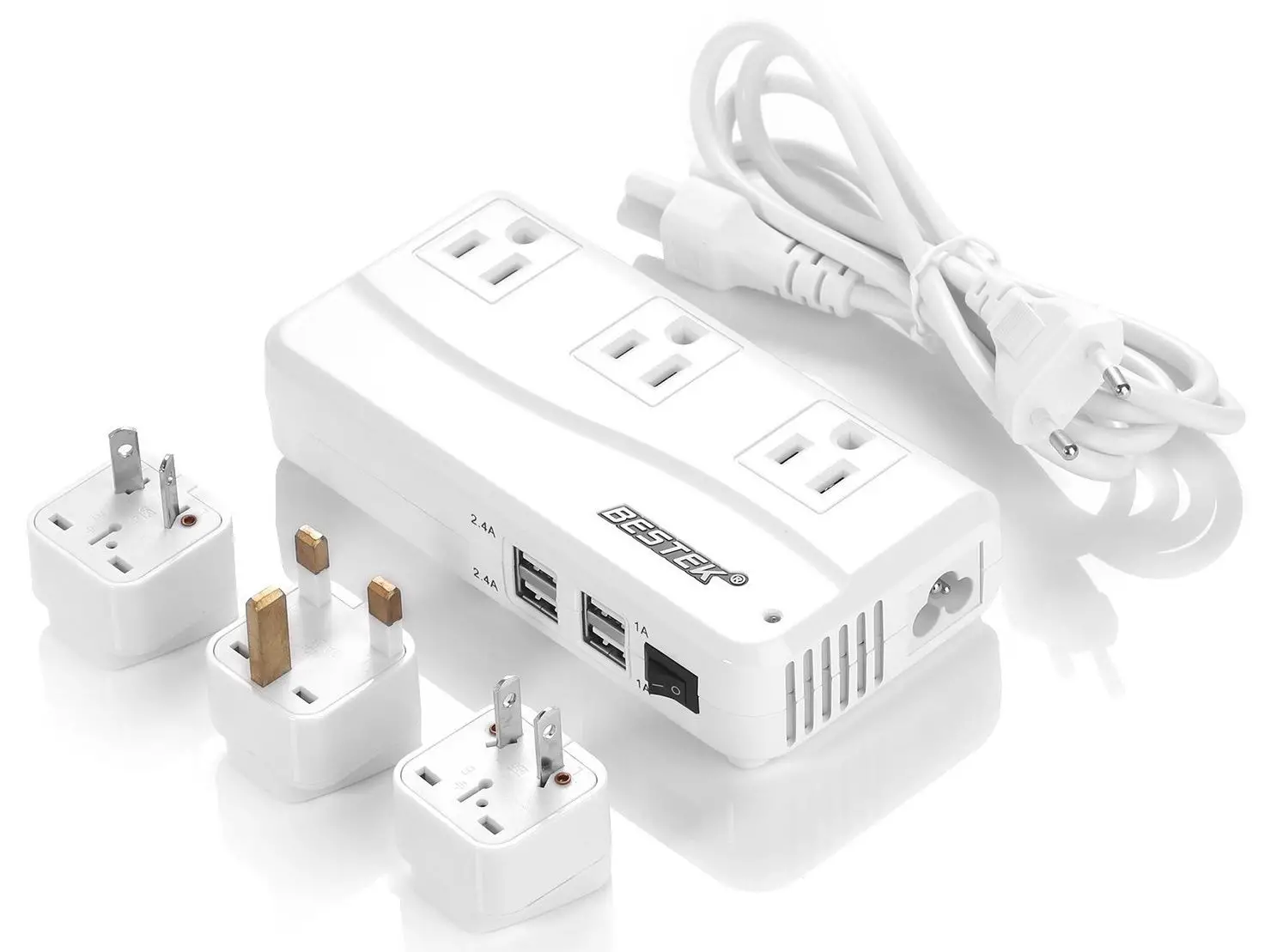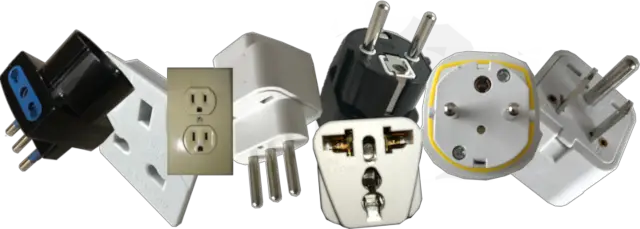Plug into Adventure: Mastering the Power of Travel Adapters
Taylor Watts - March 14, 2024
 From AC to DC
From AC to DC
Embark on an electrifying journey with Taylor Watts to unearth the secrets behind travel adapters, ensuring you stay powered and connected on your globetrotting exploits!
From AC to DC: Understanding the Power Behind Your Travel Adapter ✈️🔌
Hey there, fellow globetrotters! It's Taylor Watts here, your personal conduit for all things travel and tech. You've probably been there — moments before jetting off to an exotic destination, you realize you've got your chargers but no clue about the plugs and sockets you'll encounter. 🌍💡
Journeying from country to country doesn't just mean changing time zones. It also means dealing with the intricacies of alternating current (AC) and direct current (DC) power systems, and how they play nice (or don’t) with your beloved gadgets. But fear not! I'm here to unravel the mysteries behind the power adapter you toss into your suitcase. So buckle up, and let’s dive into the electrifying world of travel adapters!
What’s the Difference Between AC and DC Anyway? 🤔💭
When Thomas Edison and Nikola Tesla went head-to-head in the current wars, they left us a legacy beyond just an intriguing history lesson. Today, our electronics are powered by their discoveries: AC and DC. But what are they?
Alternating Current (AC): This is the type of electricity commonly supplied to your home and the plugs you find on walls worldwide. It's called alternating because the current changes direction periodically. AC is the go-to for powering buildings because it travels over long distances efficiently.
Direct Current (DC): Think of all the battery-powered things you love. Your phone, camera, laptop... they all work on DC power. Unidirectional, or one-way current, DC is what your devices need to function.
The Role of Your Adapter: A Lifeline for Your Electronics ⚡🔋
As a seasoned traveller, you may already know that not all plug types fit all sockets. That's where your trusty adapter comes in. But it's not just about shape and size; it's also about making sure your devices get the power they need in the format they can digest. Your adapter serves as a crucial bridge, allowing your electronics to plug into a foreign electrical socket seamlessly.
But wait, it gets a tad more complex...
Voltage Variations: You might have noticed that electrical systems around the world operate at different voltages — typically 110-120V or 220-240V. That cute hair dryer of yours? It could be at risk if you plug it in without checking the voltage compatibility first.
Frequency Flip-Flops: AC power also oscillates at different frequencies, measured in Hertz (Hz). Most appliances work happily at either 50Hz or 60Hz, but it's always wise to double-check.
Travel Adapter vs Voltage Converter: Know the Difference 🔄🔧
Let's set the record straight: a travel adapter is not a voltage converter. They may seem similar, but they're like chalk and cheese for your devices:
Travel Adapters: Modify the shape of your plug to fit foreign outlets. No change in electricity type or voltage here – they're purely cosmetic miracle workers!
Voltage Converters (or transformers): These are the true magicians, transforming voltage from one level to another. Remember, using an adapter without a built-in converter on a device not rated for the local voltage is a no-go!
 A good quality 220V to 110V adapter
A good quality 220V to 110V adapter
Choosing the Right Adapter for Your Adventures 🔍✨
Selecting the perfect travel adapter isn't just about picking the prettiest one. Here's a checklist to ensure you make an empowered choice:
Identify Destination(s): Know the plug types used in your destination. The last thing you want is to land and... oops, no charge for you! 😱
Check Device Voltage: Most modern gadgets are dual voltage, meaning they work on both 110-120V and 220-240V systems. Do a quick scan of your device's specs to stay safe.
Adapter Type: There are universal adapters and then there are country-specific types. Universal ones cover you in most situations, but sometimes going local provides a better fit.
Additional Features: Some adapters come with extras like USB ports or surge protection. For the multi-device carrier, this can be a game-changer!
Pro Tips for Worry-Free Power Access Abroad 💡🎒
Less is More: Opt for multi-purpose adapters with USB ports to reduce bulk in your luggage.
Surge Protection Is Your BFF: A surge protector may just save your device's life from any unexpected spikes.
An Extra Adapter Doesn't Hurt: Because losing one can mean no power for your devices, and that's just sad.
Check Out the Local Hardware Store: Sometimes, the best and most affordable adapters are found at your destination.
Keep it Cool: Adapters can get warm; ensure they have room to breathe to prevent overheating.
Get Tech-Savvy: There are cool apps and websites (whatplug.info) that offer advice on plugs and sockets worldwide.
My Personal Experience & Advice 💁♀️🌟
As a seasoned globe-trotter and clandestine electrician, I've had my fair share of power battles. Here's my little nugget of wisdom: always think ahead. Tailor your tech gear to your travel plans. Doing a bit of homework on your layover country's sockets could be as essential as knowing a few words in the local tongue.
I remember this one time I was in this picturesque village in Italy, where my fancy universal adapter was just too bulky to fit the recessed socket. Luckily, I could quickly snag a sleek, country-specific one from a nearby store. Phew! 😅 Always plan for the unplanned – it's the wayfarer's mantra.
To Wrap It Up: Your Takeaway Charge 🔋✨
Now that you're in the know, you're ready to tackle the world's AC and DC currents with gusto. Understanding the power behind your travel adapter means never again being held captive by a dead battery. As your electronic equipment's lifeline, treat your adapters with respect and choose them wisely.
And remember, the key to power nirvana is ensuring compatibility, preparing for destination specifics, and taking care of the tiny details. When in doubt, reach out to fellow travel enthusiasts or local experts — the power is in your hands, quite literally!
So, as you pack your adventure essentials, let's stay connected, powered, and ready for whatever escapades await. Here's to powering your journey, one adapter at a time. ✨
Safe travels and charged devices,
Taylor Watts 🌟✈️
↬ a link from your website helps too.
